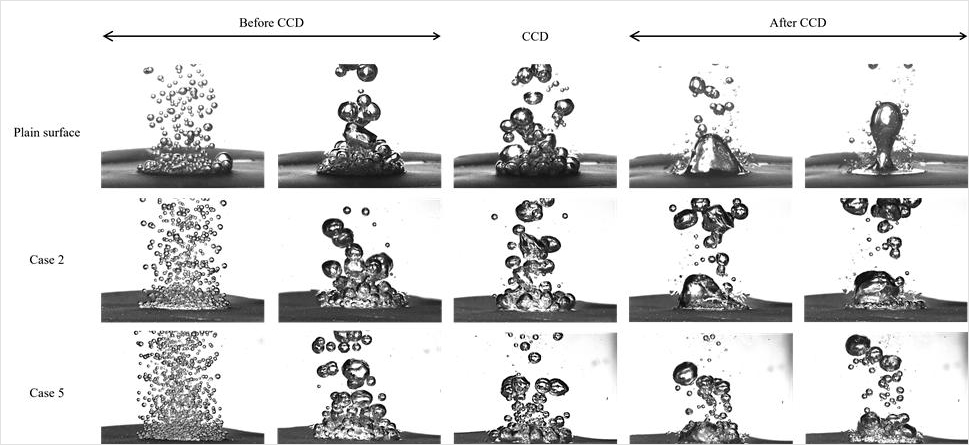header
News
Undergraduate Student in Nuclear Engineering Publishes Research on Core Technology for Large-Scale Hydrogen Production
- WRITER 학무부총장실

Student Su-Yeon Park (Nuclear Engineering, ‘21) has successfully published a research article in a prestigious SCI-listed international academic journal through the undergraduate research support program
In her research, Student Park developed a method to enhance the efficiency of hydrogen production in low-temperature water electrolysis by increasing the critical current density (CCD), the highest current density at which the electrolysis proceeds efficiently on the electrode surface, by up to 54%. This was achieved by electrodepositing microporous structures onto the cathode surface. She also clarified the underlying mechanism of how microporous structures enhance the maximum threshold of the CCD. If this threshold is exceeded, hydrogen bubbles start to accumulate on the electrode surface, forming a gas film that blocks further electrolysis and reduces efficiency. The research results were published in December 2024 in the Journal of Electroanalytical Chemistry under the title, “Enhancement of critical current density using microporous structure in a low-temperature water electrolysis.”
Mechanism for enhancing the maximum hydrogen production point in low-temperature water electrolysis with microporous structures
In the water electrolysis process, hydrogen is reduced at the cathode in the form of small bubbles. As electrolysis progresses, hydrogen and oxygen bubbles are continuously generated on the electrode surface, and the production of hydrogen rises in line with the voltage increase. Once a certain voltage threshold is reached, however, the hydrogen bubbles coalesce into a single large gas film that covers the entire cathode. This film reduces the reaction area by obstructing contact between the electrolyte and the electrode, hindering the hydrogen production reaction. The current density at which this gas film formation occurs is called the critical current density (CCD). This research has demonstrated that by applying microporous structures on the cathode surface, the CCD can be increased, allowing more efficient electrolysis at higher current densities before the onset of gas film formation.
With its superior capillary wicking effect and the inwardly curved shape, the microporous structure increases the number of nucleate sites—where hydrogen bubbles form—as well as reducing the size of individual hydrogen bubbles, which in turn forces more bubbles to depart from the cathode surface. The increased surface area of the microporous structure also improves electrolyte penetration, further enhancing hydrogen reduction efficiency. These combined effects—more nuclear sites, smaller bubble size, and faster bubble detachment—prevent the formation of a continuous gas film over the cathode, thereby delaying the onset of the CCD and allowing electrolysis to operate efficiently at higher current densities than previously possible.
As a key energy carrier, hydrogen plays a crucial role in energy storage and transportation. Hydrogen produced through water electrolysis can be used to generate electricity in fuel cell systems as a clean energy source for industrial chemical processes. It is also gaining popularity as a critical solution for combating climate change. Student Park's research represents a significant advancement in core electrolysis technology for large-scale hydrogen production.
Active as an undergraduate researcher since her junior year
Student Park joined the lab of Professor Bum-Jin Chung of the Department of Nuclear Engineering as an undergraduate researcher in her junior year and successfully published an SCI-listed journal article after about one year of research. Looking back on her experience, she commented, "I am honored to have my name published in a world-class academic journal, made possible by the help and support of many senior researchers and the guidance of my professor. This achievement has been a great source of motivation for me, and I will continue dedicating myself to research."
Building on her graduate-level research success, Student
Park will join the mater’s program at Kyung Hee this year. She is currently conducting experimental research on external natural convection and cooling performance evaluation of the Small Modular Reactor Dome (SMR Dome), further advancing her study in nuclear engineering.
